2023 News Archive
Highlighting articles from across industry, academia, medical research, and government that are relevant to TATRC's focus areas, mission and vision.
Some of these articles, websites, and hyperlinks are external and are not affiliated with the Department of Defense, and the Telemedicine & Advanced Technology Research Center.
The views, opinions and/or findings contained in this publication are those of the author(s)/company and do not necessarily reflect the views of the Department of Defense and should not be construed as an official DoD/Army position, policy or decision unless so designated by other documentation. No official endorsement should be made.
Reference herein to any specific commercial products, process, or service by trade name, trademark, manufacturer, or otherwise, does not necessarily constitute or imply its endorsement, recommendation, or favoring by the U.S. Government.
December 2023
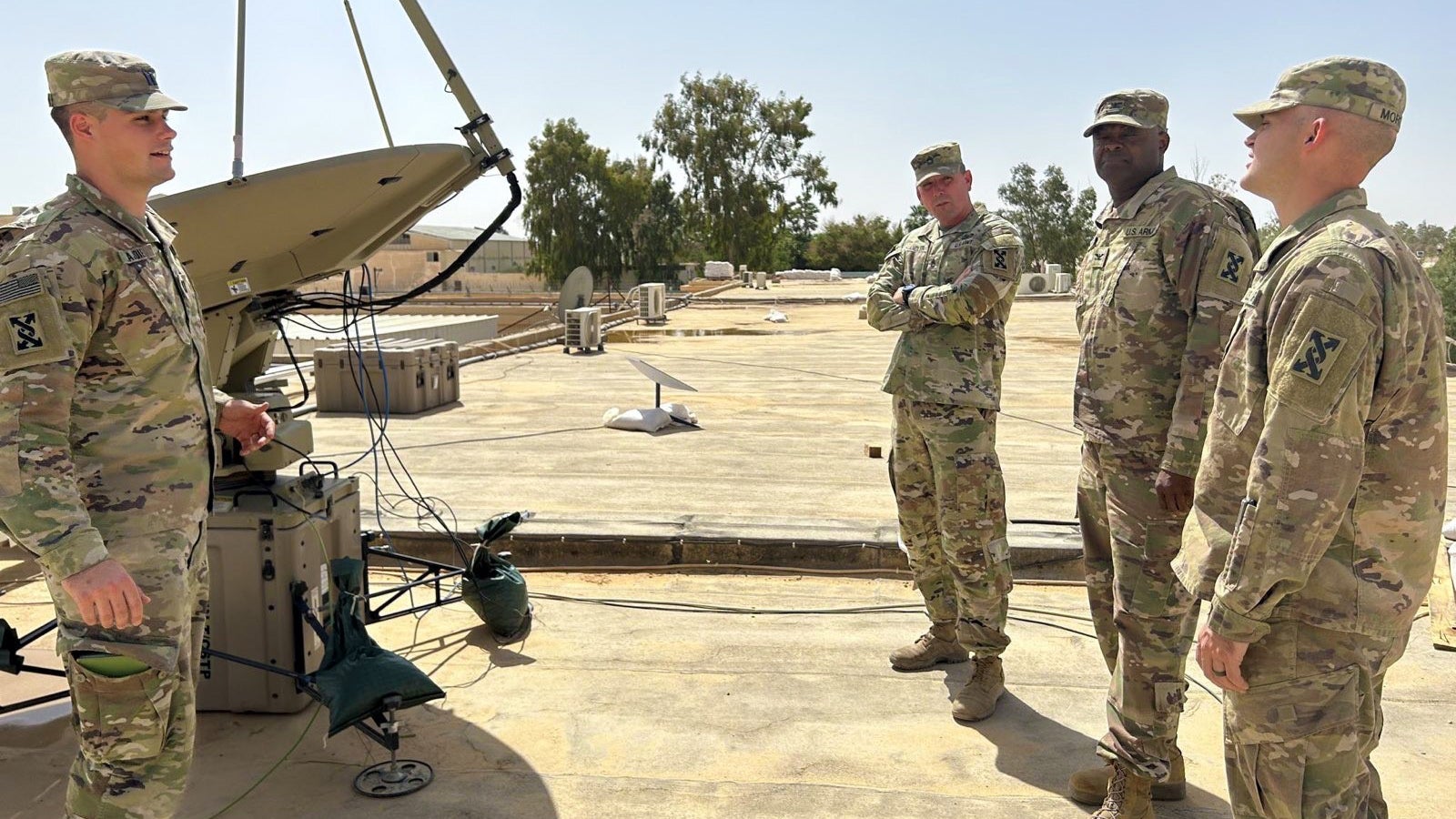
From increasing productivity to processing large amounts of data, artificial intelligence can change the way soldiers operate and fight, a panel of experts said during a forum hosted by the Association of the U.S. Army.
Read more:quality(70)/cloudfront-us-east-1.images.arcpublishing.com/archetype/VF6ONFHC7VHLBCZVBYVCF4FNHM.jpg)
Casualty evacuations during recent wars faced their own challenges — enemy fire, dust storms and austere pickup points.
Read more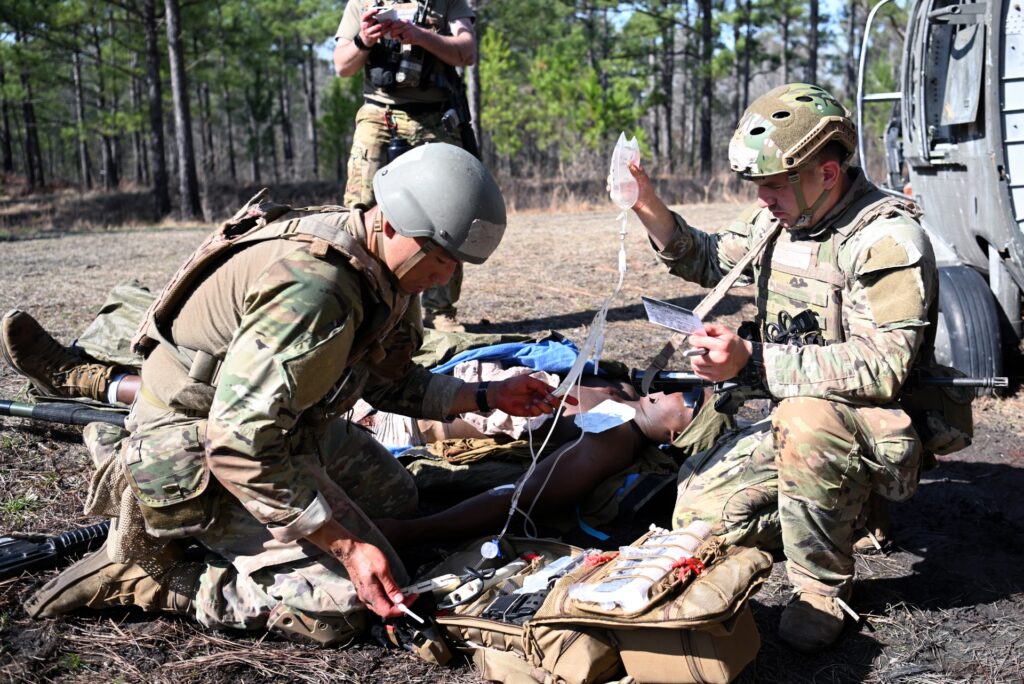
As the U.S. military prepares for an era of large-scale combat operations, the “golden hour” as medics know it is dead. So long as near-peer adversaries can create anti-access/area denial zones that threaten ground and rotary wing medevac units, they will not be able to get servicemembers to Role 2 surgical care within an hour after the injury.
Read more
The US Army Research Institute of Environmental Medicine has developed an application to help soldiers prevent injuries commonly sustained in cold weather environments.
Read moreNovember 2023
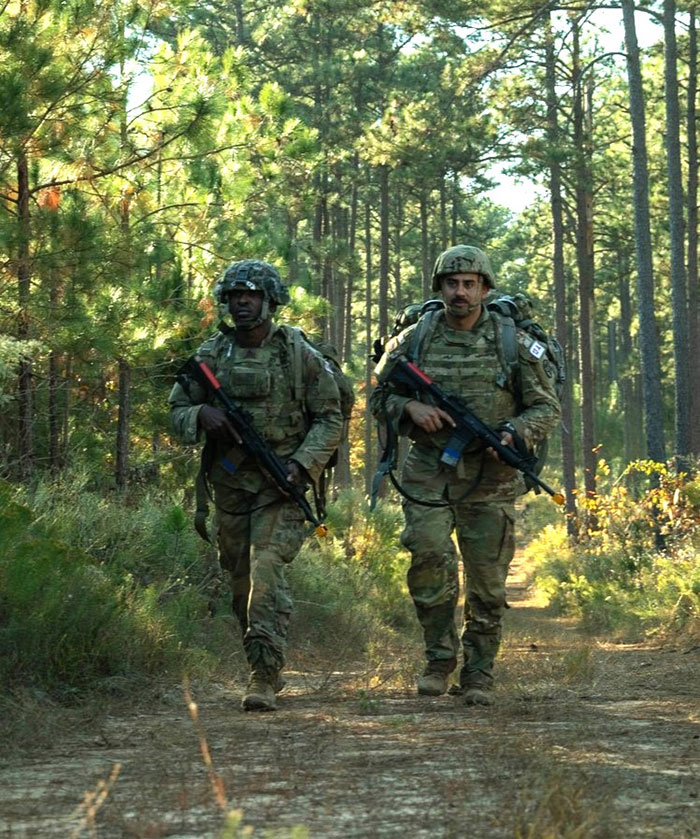
Best Medic competitions are designed to push participants to their physical and mental limits during four days of relentless skill and endurance tests. In most cases, participants go into the competition with an edge: they already know their squad mate.
Read more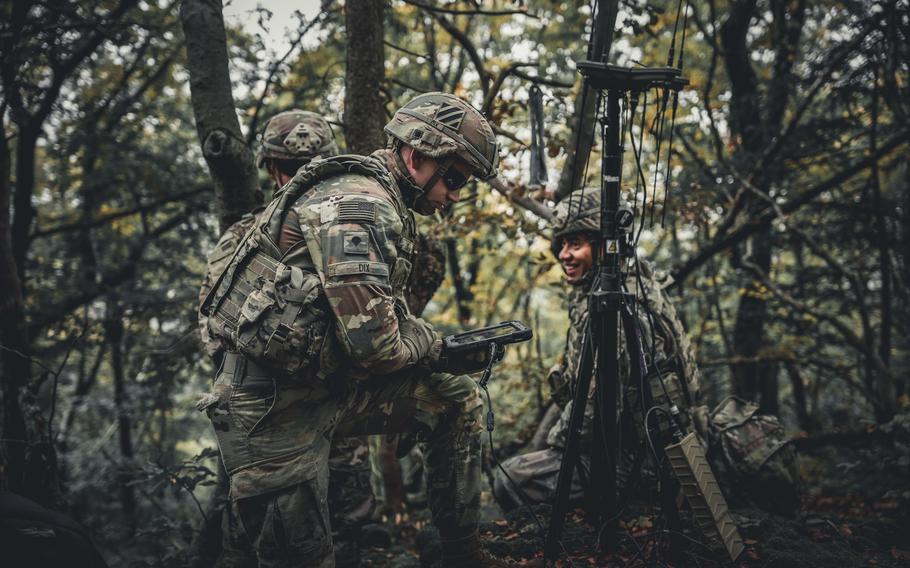
STUTTGART, Germany — U.S. soldiers in Europe have tested artificial intelligence technology designed to help them evade enemy detection while using wireless networks in contested areas, the 7th Army Training Command said in a statement this week.
Read more/2023/11/23/image/jpeg/BIOetN9AM7kbAop0UmRpTCQvrqBxd8SRIAKK7i0C.jpg)
They are faster than ambulances in situations where timing is key.
Karolinska Institutet researchers have been investigating the idea of sending drones equipped with automated external defibrillators (AEDs) to patients in cardiac arrest instead of ambulances and have now found that, in more than half of the cases, the drones were three minutes ahead of the vehicles."
Read more
In March 2020, the world was about to experience an unprecedented surge in the need for critical care. While COVID-19 strained the healthcare capacity of communities across the nation, it impacted the 55% of the U.S. counties that lack an Intensive Care Unit (ICU) especially hard.
Read more:quality(70)/cloudfront-us-east-1.images.arcpublishing.com/archetype/UNUTSJPXZND5ZIQ556Q5GXWVDM.jpg)
The military has struggled to provide adequate access to mental health care for years. And even as it has worked to reduce the stigma and consequences of seeking help, provider shortages have created appointment logjams and long wait times — if an appointment is even available at all.
Read more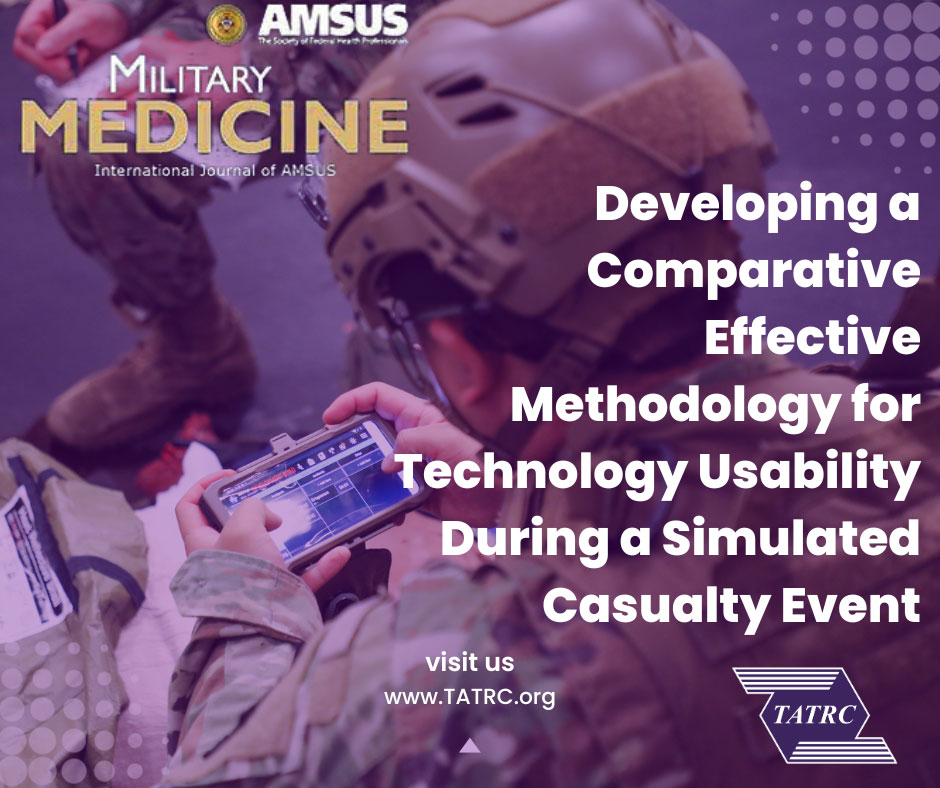
Future combat environments will be complex, making effective care for multi-domain battlefield injuries more challenging. Technology and resources are essential to reduce provider burden enabling more accurate assessments, decision-making support, expanded treatment, and outcome improvements.
Read more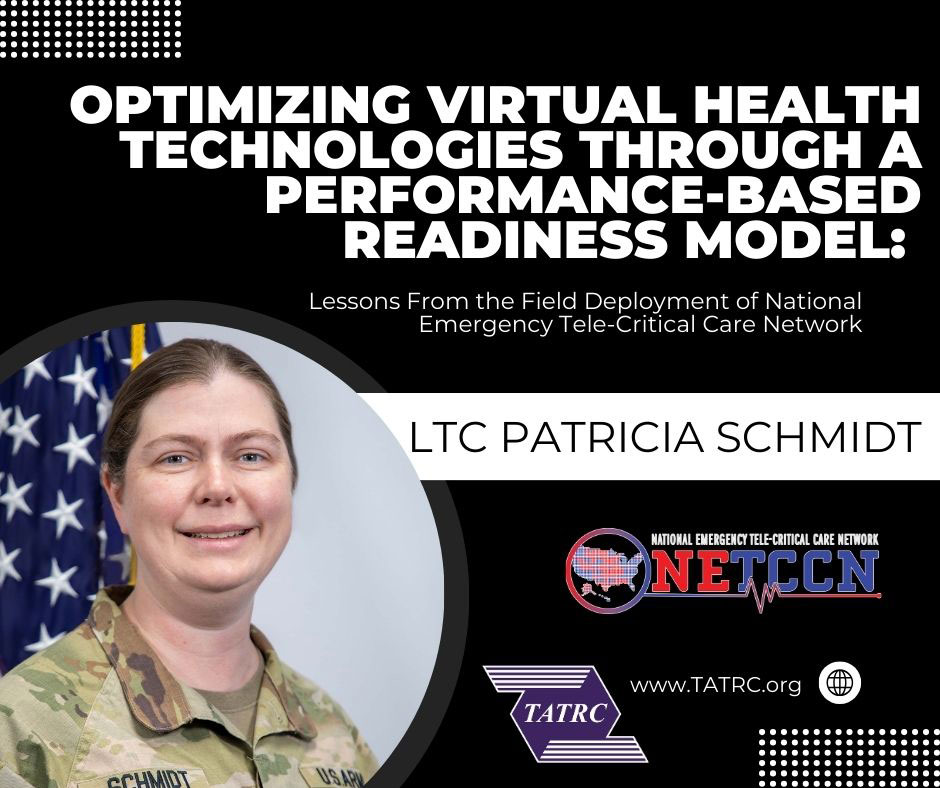
The advancement of the Army’s National Emergency Tele-Critical Care Network (NETCCN) and planned evolution to an Intelligent Medical System rest on a digital transformation characterized by the application of analytic rigor anchored and machine learning.
Read more
SILVER SPRING, Md. – Navy physicians from the Naval Medical Research & Development (NMR&D) enterprise, alongside colleagues in the Army and Air Force, highlighted the crucial role of overseas medical research laboratories at a presentation during the American College of Physicians (ACP) Tri-Service Chapters 2023 Annual Scientific Meeting on November 8.
Read more
AI able to identify people at more than 90% risk of sudden death
A new study found that artificial intelligence could be used to help detect risk signs and possibly even prevent sudden cardiac death.
Read more
The Defense Department today released its strategy to accelerate the adoption of advanced artificial intelligence capabilities to ensure U.S. warfighters maintain decision superiority on the battlefield for years to come.
Read moreOctober 2023

The Department of Veterans Affairs is looking at artificial intelligence tools to accelerate its work reducing burnout among its health care workforce.
Read moreA pioneering trial between Singapore and Japan has proven that it is feasible.
Clinician-scientists from Japan and Singapore have set out to test the viability of robotic telesurgery as a treatment option."
Read more
Assistant Secretary of Defense for Health Affairs Dr. Lester Martinez-López believes that every decision he has made, or that was made for him throughout his life, led him to being nominated by President Joe Biden in 2022 to his current position as the head of the Military Health System
Read more
SAN DIEGO. Northrop Grumman and the Air Force Research Laboratory (AFRL) are working on a project to integrate commercial space internet into airborne platforms in a bid to advance connectivity for warfighters and support the U.S. Department of Defense (DoD) vision for Joint All-Domain Command and Control (JADC2).
Read more
AI and other technologies will enable military personnel to be better warfighters.
Six years into the Army’s modernization plan, the service’s leaders are deliberating on how to fully integrate emerging technology like artificial intelligence into the battlefield.
Read more:quality(70)/cloudfront-us-east-1.images.arcpublishing.com/archetype/MR34LJPJQ5EVZK4RZZ3OLLQQSE.jpg)
WASHINGTON — Project Convergence started relatively small, with limited soldier participation.
At its inception in the Arizona desert in 2020, the U.S. Army hoped to use the event to evaluate its materiel upgrades, including a potent brew of artificial intelligence, autonomy, robotics and radiating connectivity.
Read more
A development team with the U.S. Army Medical Materiel Development Activity (USAMMDA) completed its support of the second annual U.S. Army Best Squad Competition today, providing real-time physiological data to competition organizers and health care professionals using the Health Readiness and Performance System (HRAPS).
Read more
The MGH Dept. of Anesthesia, Critical Care, and Pain Medicine’s program on Medical Device Interoperability & Cybersecurity (MD PnP) presented a Scientific & Educational Exhibit ( S1) at Anesthesiology 2023.
Read more
The Defense Health Agency is a joint, integrated Combat Support Agency that enables the Army, Navy, and Air Force medical services to provide a medically ready force and ready medical force to Combatant Commands in both peacetime and wartime.
Read moreSeptember 2023

Newswise — Acute care surgeons at Vanderbilt University Medical Center are leading a two-year, multicenter observational study of a minimally invasive technique to control life-threatening blood loss by inserting a balloon inside the aorta to restrict blood flow below the heart.
Read more
This story is part of a series on the current progression in Regenerative Medicine. This piece discusses advances in the use of artificial intelligence in medical robotics.
Read more
VA’s Dr. Carolyn Clancy discussed the six key principles underscoring the VA’s use of AI in veteran’s health care.
Read more
FORT DRUM, New York — Medics from the Connecticut Army National Guard’s 143rd Regional Support Group trained for a mass casualty event during their annual training in early August at Fort Drum, New York.
Read more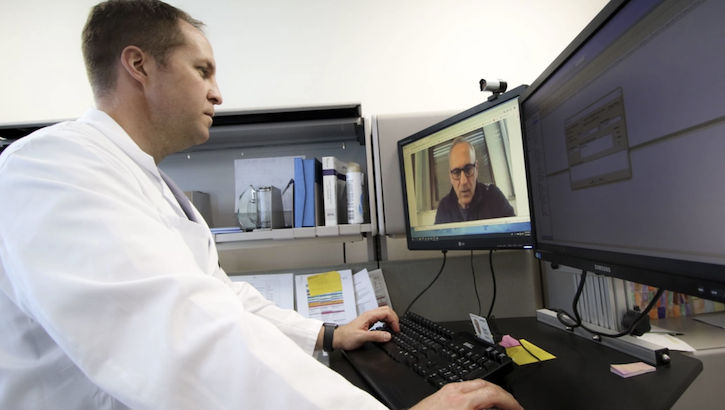
The Defense Health Agency is utilizing virtual health tools like MHS Video Connectopens Health.mil to create a digital-first, patient-centered health care delivery system.
Read more
A patient triage AI model can accurately predict disease severity and length of hospitalization during a viral outbreak using clinical and metabolomics data.
Read more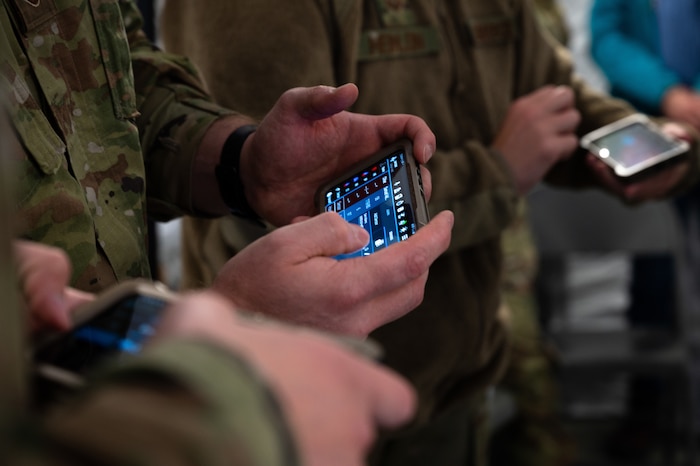
WRIGHT-PATTERSON AIR FORCE BASE, OHIO (AFNS) -- A mobile medical documentation tool developed by Air Force Research Laboratory researchers was selected as the joint integrated electronic health record for point-of-injury and en route care by the Joint Operational Medicine Information Systems.
Read moreAugust 2023

CAMP GRAYLING, Mich. -- Over more than two decades of combat, the military has refined its ability to save lives on the battlefield.
Rapid handoff of wounded patients to qualified, equipped surgical teams within one hour of injury -- the “Golden Hour” -- dramatically increased the survival rates of those wounded in combat.
Read more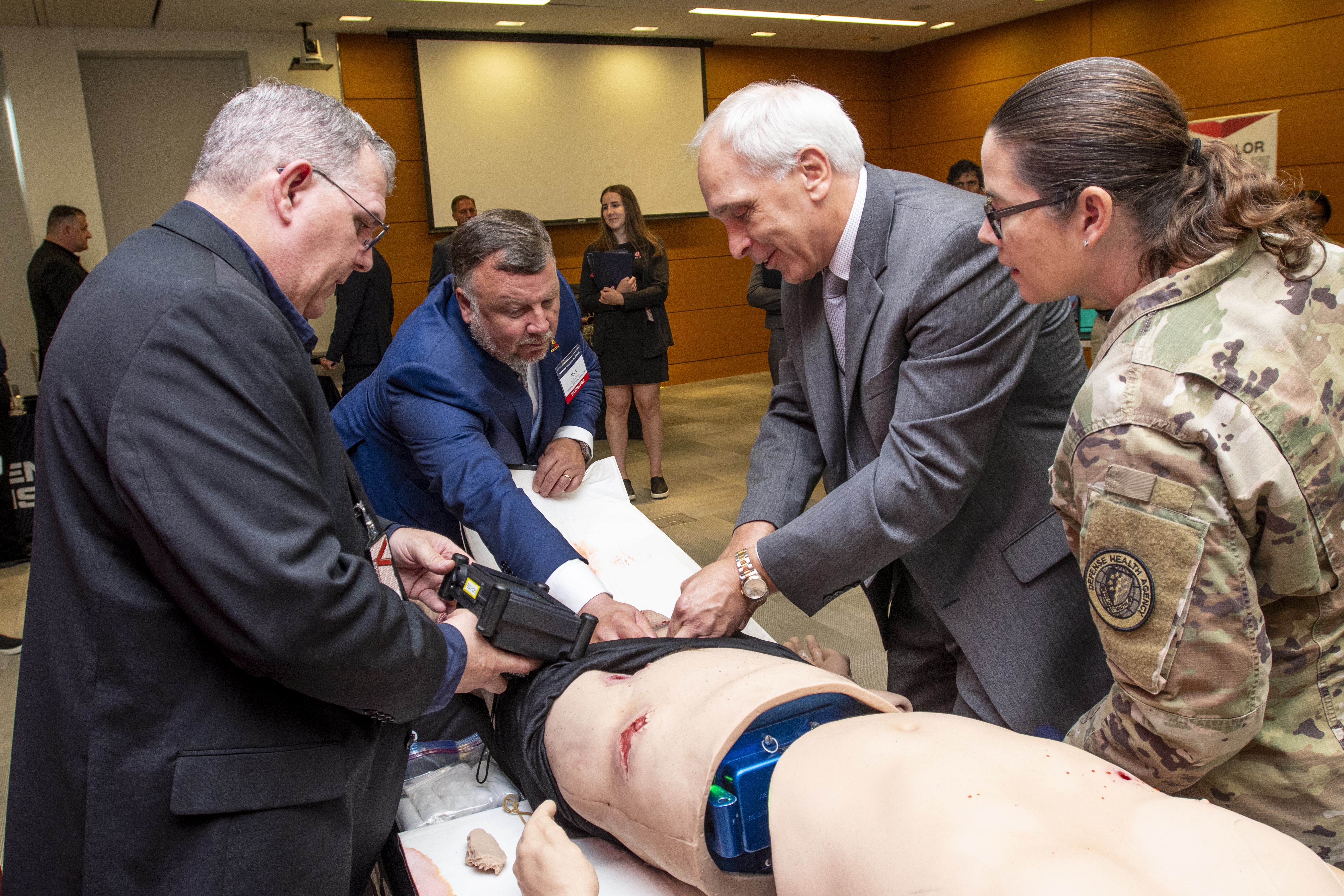
The Defense Health Agency’s Medical Modernization and Simulation Division brought the latest in devices to its Medical Simulation Expo on Aug. 3, 2023, at DHA headquarters in Falls Church, Virginia.
Read more
In the ever-evolving landscape of modern warfare, technological advancements have propelled us into a realm of sophistication that would leave even our recent past soldiers awestruck. From drones armed with thermal sensors to laser aiming modules enhancing rifle precision, the battleground has become a high-tech theater of combat.
Read more
The Johns Hopkins University Applied Physics Laboratory is using large language modeling to develop technology that can help soldiers with no medical training to administer care to injured comrades on the battlefield.
Read more
Nearly all military physical and field training exercises can enhance mental toughness and physical endurance, which researchers at the U.S. Army Medical Research and Development Command believe can prepare Warfighters for the future, they explained during a session on the final day of the 2023 Military Health System Research Symposium on August 17, 2023.
Read more
Defense Health Agency Director U.S. Army Lt. Gen. Telita Crosland and U.S. Air Force Command Chief Master Sgt. Tanya Y. Johnson, senior enlisted leader for the DHA, have released the DHA Strategic Plan for fiscal years 2023 to 2028.
Read more
For the first time, the 294th Medical Company Area Support, from the Iowa National Guard, tested a groundbreaking technology by integrating drones in a training environment on Monday, August 7th.
Read more
The 2023 Military Health System Research Symposium Opens MHSRS articleopened with a plenary panel discussion with the theme "Casualty Care Across the Continuum: Operational Vignettes" on Aug. 14.
Read more
Beginning September, OEI will begin equipping the Air National Guard (ANG) with the most ruggedized, high-fidelity human patient simulators on the market today.
The closer a practice event comes to the real thing, the more effective the trainee will be when it counts. It doesn’t get more real than TCCS Pro.”— Lou Oberndorf, OEI chairman and CEOABERDEEN, MARYLAND, UNITED STATES, August 8, 2023/EINPresswire.com/ -- With one of the largest single procurements of training simulators to date, the Department of Defense (DoD) will soon equip the Air National Guard (ANG) with the most ruggedized, high-fidelity human patient simulators on the market today.
Read moreJuly 2023

A study being conducted by Johns Hopkins Applied Physics Laboratory and the U.S. Army aims to combine human and artificial intelligence capabilities to improve emergency medical response during combat.
Read more
BRISBANE, Australia — Technology by definition is the application of scientific knowledge for practical purposes, especially in industry.
Read more
Scripps Research scientists have developed a machine-learning system-;a type of artificial intelligence (AI) application-;that can track the detailed evolution of epidemic viruses and predict the emergence of viral variants with important new properties.
Read more
A new robot medic could save lives in places too dangerous for human doctors to operate.
The remote control robotic vehicle uses virtual reality to enable medics to check a casualty’s temperature, blood pressure, and heart rate and even give injections – without putting their lives at risk.
Read more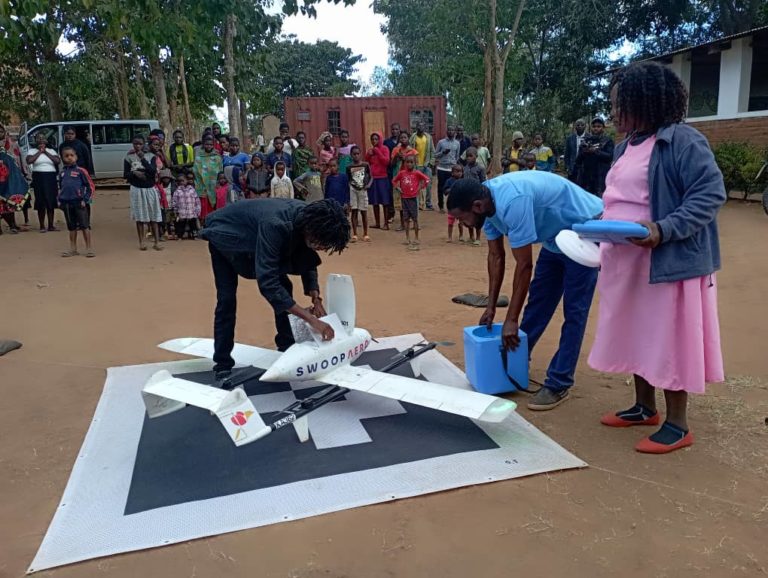
On a partly cloudy morning last week, staff and onlookers watched with excitement and curiosity as a drone carrying polio vaccine doses was launched from the Matawale Health Centre in Zomba in eastern Malawi.
Read more
Team members with the U.S. Army Medical Materiel Development Activity tested a developing technology recently in the ongoing effort to find medical solutions to help identify traumatic brain injury closer to the point of injury than ever before.
Read more
With millions of patients under its belt, digital health startup K Health is looking to scale its artificial intelligence technology in hospitals, starting with new strategic investor Cedars-Sinai.
Read more
CAMBRIDGE, Mass., July 14, 2023 /PRNewswire/ -- OpenEvidence, a generative Artificial Intelligence (AI) company working on aligning Large Language Models (LLMs) to the medical domain, announced today that OpenEvidence AI has become the first AI in history to score above 90% on the United States Medical Licensing Examination (USMLE).
Read more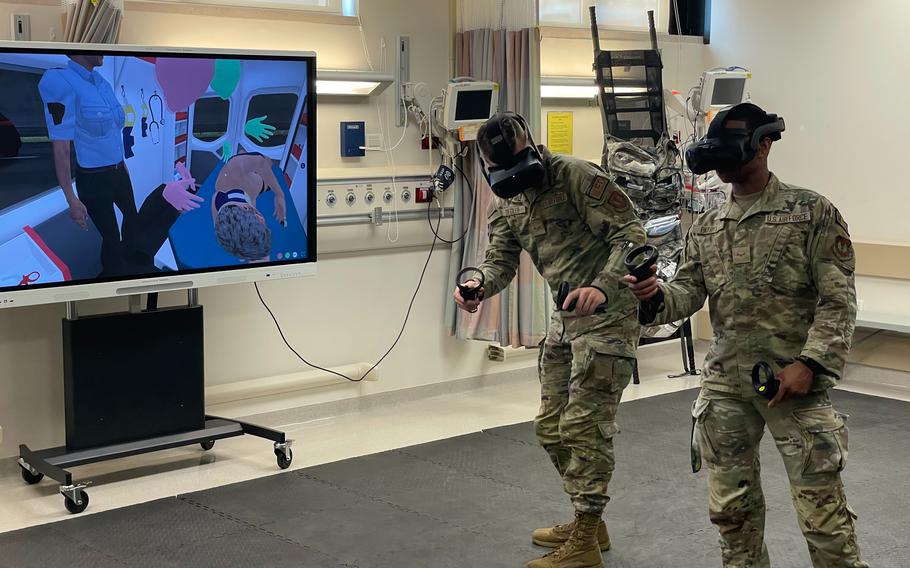
AVIANO AIR BASE, Italy — U.S. military medics at this base in northeastern Italy are jumping from a battlefield to an ambulance to a hospital setting, all at the push of a button and with no travel time required to reach patients.
Read more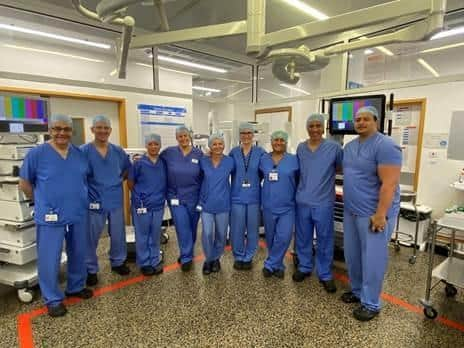
Dewsbury and District Hospital's brand new surgical robot has successfully performed its first operation on a patient.
The robot, which arrived at Mid Yorkshire Teaching NHS Trust in early June, was used to perform a laparoscopy to remove a section of the patients’ colon as a treatment for bowel cancer – a procedure which takes around three to four hours.
Read more
Since its inception, using 5G for first responders has been a big focus for new applications. Early research was done by Verizon and other telecoms into using the cellular network to help enable faster connections to accelerate healthcare in emergencies.
Read more
Scientists at the University of Bristol have discovered that a simple sponge can enhance the way robots grasp objects.
This easy-to-make sponge-jamming device can assist stiff robots handle delicate items carefully by mimicking the nuanced touch, or variable stiffness, of a human."
Read moreJune 2023

The scenario: On the I-495 inner loop near Walter Reed, a tractor trailer overturned and caught fire causing multiple vehicles and two charter buses to crash. Both sides of the Capital Beltway were closed because of a secondary multi-vehicle crash.
Read more
New program looks to combat bloodstream infections, a significant battlefield health threat
Fungal and bacterial pathogens can cause bloodstream infections (BSI), are a persistent and deadly threat to both civilian and military populations,1, 2 and are particularly prevalent in the military due to increased risk of infection following trauma.
Read more
Before every war there is discussion among experts, mostly inside the military, about gaps in our preparedness. That conversation is going on now.
Read more
Drones in healthcare are gaining popularity for delivering medicines and other medical supplies to remote and underserved regions. Recently, Zipline, the leading US-based manufacturer and operator of delivery drones, has formed several partnerships throughout Africa for delivering vaccines, blood products, and other medical supplies to rural and remote areas.
Read more
Subscribers will have access to unlimited virtual urgent care visits through secure messaging, phone calls and video chats from 7 a.m. to 7 p.m.
Read more
Published in JAMA Network Open, a new study shows that the portion of patients with or at risk of developing cardiovascular disease (CVD) who use wearable devices was minimal, indicating growing health disparities.
Read more
In a recent experiment published in JAMA, physician-researchers at Beth Israel Deaconess Medical Center (BIDMC) tested one well-known publicly available chatbot’s ability to make accurate diagnoses in challenging medical cases.
Read more
STANFORD, Calif.--(BUSINESS WIRE)--Responding to rapid advances in artificial intelligence and the urgent need to define its responsible use in health and medicine, Stanford Medicine and the Stanford Institute for Human-Centered Artificial Intelligence (HAI) today announced the launch of RAISE-Health (Responsible AI for Safe and Equitable Health).
Read moreMay 2023

Cancer patients looking for quick answers or support between their appointments can now turn to "Dave," an artificial intelligence chatbot trained to discuss all things related to oncology.
Read more
A University of Texas at Arlington engineering researcher who studies traumatic brain injuries has received funding to use computer motion simulation that replicates the movements of a person performing activities that could lead to injury.
Read more
A new wearable device that comes in the form of a smart watch alerts military personnel to signs of illness before any symptoms appear. The Rapid Assessment of Threat Exposure (RATE) project puts sensors in a commercial watch and a ring that send data to a program for assessing potential infections.
Read moreJanuary 2023

Combat & Casualty Care spoke with Matt Quinn, Science Director at the Army’s Telemedicine & Advanced Technology Center (TATRC) regarding the evolution of the National Emergency Tele-Critical Care Network (NETCCN) and ways the NETCCN is bridging the care gap in lack of immediate care response when casualties occur remotely and ready access to hands-on treatment is not an option.
Read more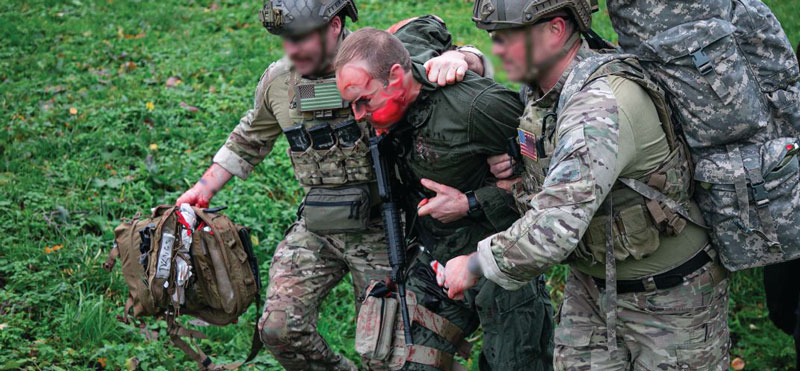
Combat & Casualty Care had the opportunity to speak with COL Brian Lanier, USAISR Commander, regarding areas the DoD’s premier laboratory for study of combat casualty care delivery and home of the Department’s only burn center is presently focused on as we head into 2023.
Read more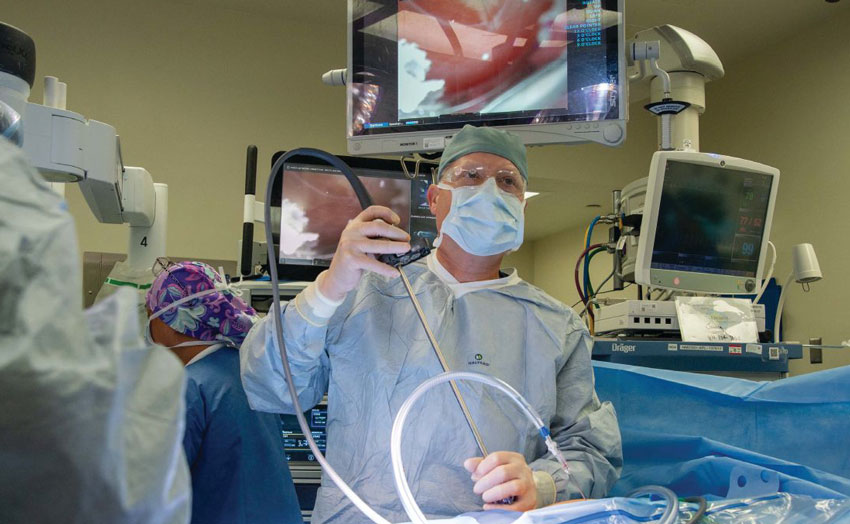
Championed by Naval Medical Center-San Diego’s Virtual Medical Operations Center (VMOC), a relatively new, communications-based, autonomy-facilitative practice enabling remote telementoring to boost operational surgical capability.
Read moreWe got an inside look at how Army combat medics are trained at Fort Sam Houston and Camp Bullis in San Antonio, Texas. About 5,000 soldiers graduate every year from the 16-week training program, which teaches soldiers to control bleeding, manage airways, and perform blood transfusions. After 15 weeks of classroom instruction and hands-on training, trainees spend the final eight days treating patients in a simulated combat environment known as the field training exercise. Insider spent five days immersed in the course, where we observed different classes at various stages of training.
Read more
A short but intensive approach to "talk therapy" can help many combat veterans overcome post-traumatic stress disorder (PTSD), a new clinical trial has found.
Read more
An Army general has taken the helm of the Defense Health Agency, continuing Army leadership of the nearly 10-year-old organization.
Read more
The U.S. Army Deputy Surgeon General Maj. Gen. Promotable Telita Crosland is leaving the Office of the Surgeon General and U.S. Army Medical Command (MEDCOM) to become the Director of the Defense Health Agency (DHA), where she will lead a global workforce of nearly 140,000 civilians and military personnel.
Read more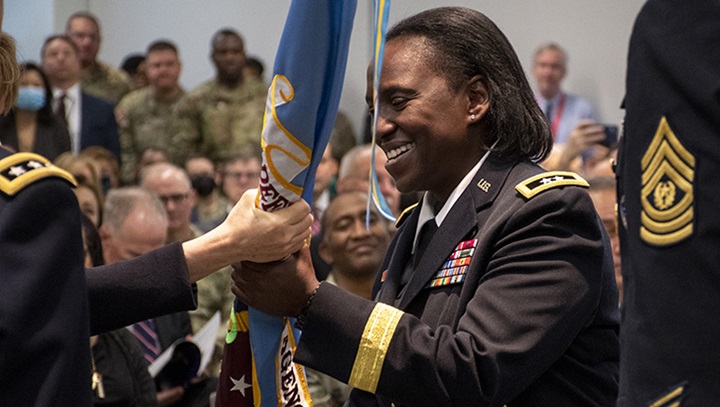
U.S. Army Maj. Gen. Telita CroslandOpens Health.mil yesterday became the Defense Health Agency’sOpens Health.mil fourth director in its nearly 10-year existence, pledging to continue taking the DHA “down its path of excellence.”
Read moreU.S. Army Maj. Gen. Telita Crosland becomes the fourth director of the Defense Health Agency (DHA) in a ceremony Jan. 3, 2023, at Defense Health Headquarters in Falls Church, Virginia.
Read more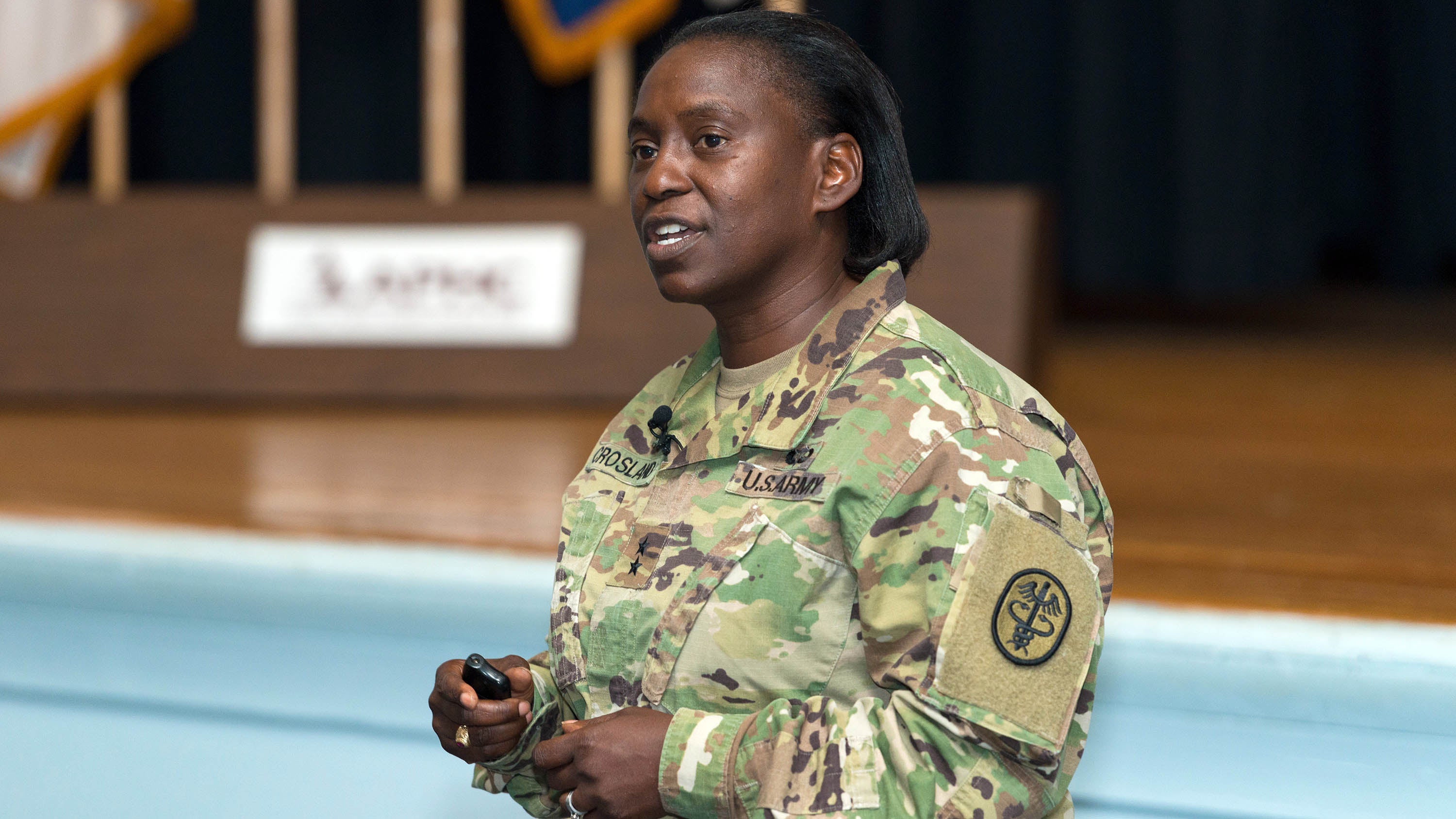
Maj. Gen. Telita Crosland is the new director of the Defense Health Agency, becoming the first Army woman to lead the agency.
Read more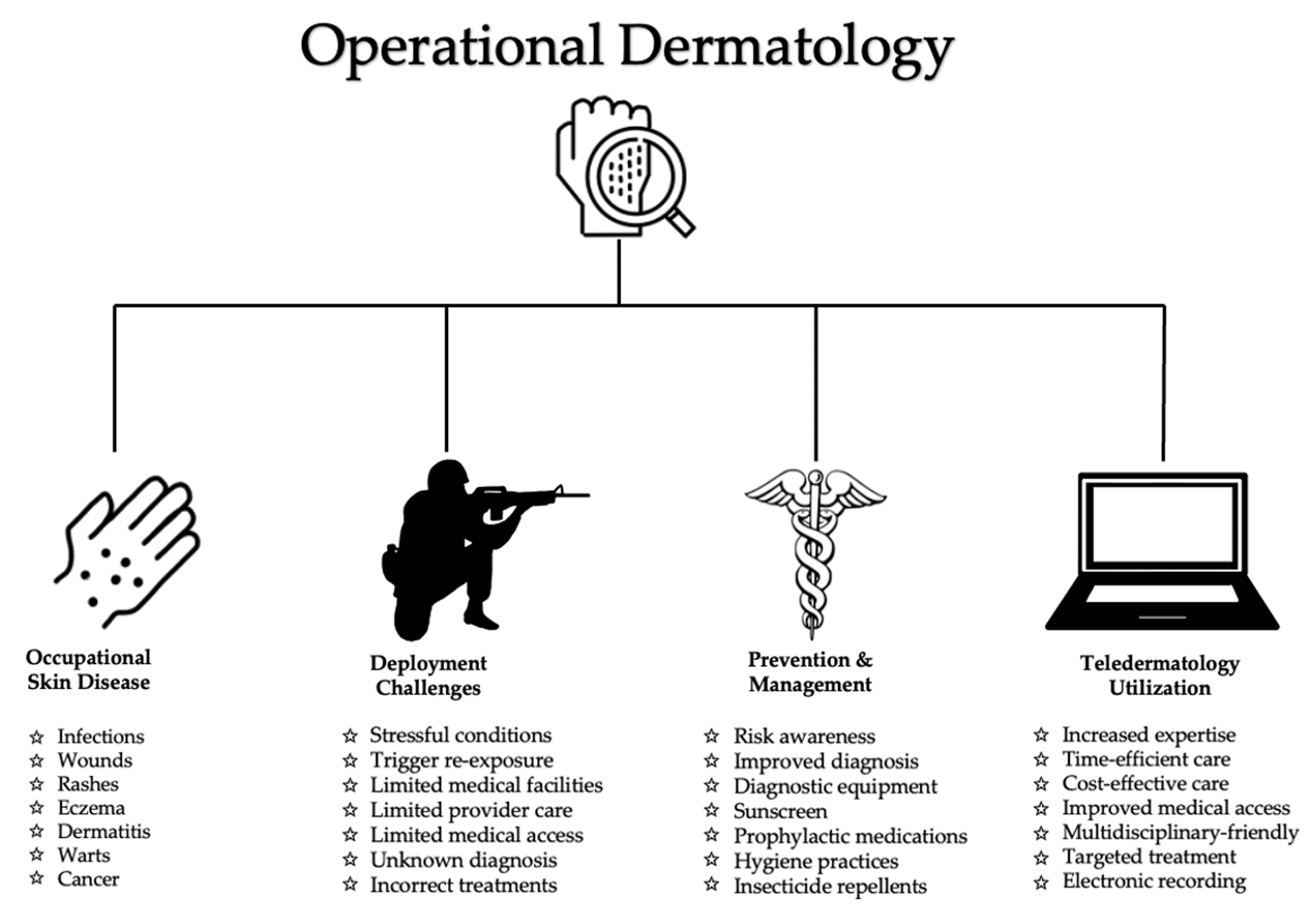
Abstract
Despite skin being the largest and most exposed organ of the human body, skin issues can be challenging to diagnose in deployed military service members. Common reasons deployed soldiers seek dermatological evaluation include infections, inflammatory skin conditions, and skin growth.
Read more